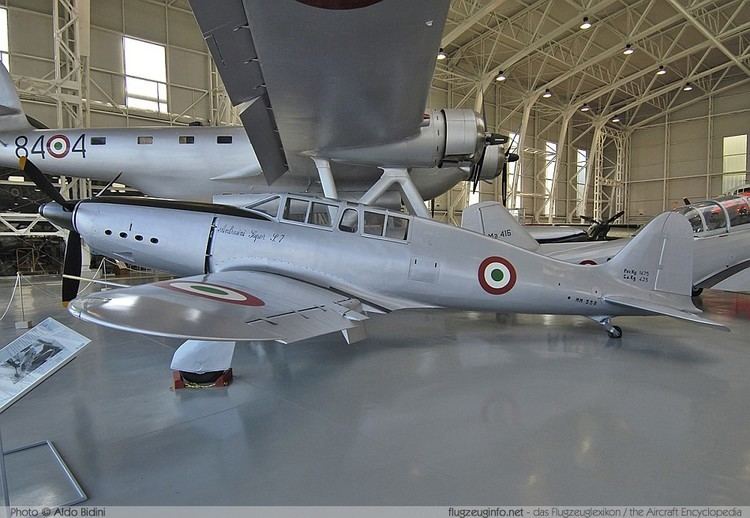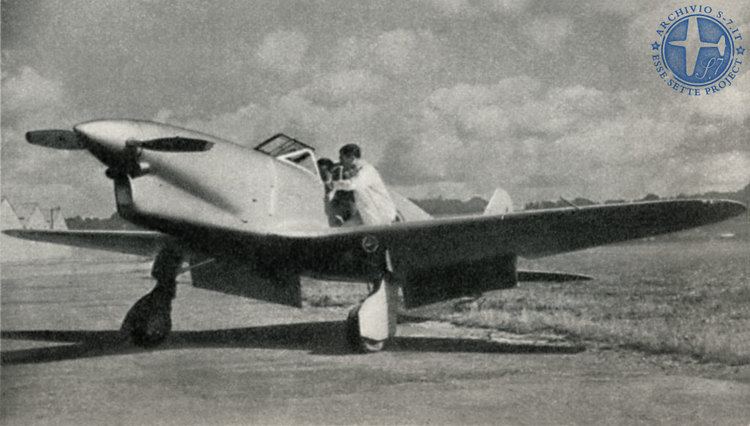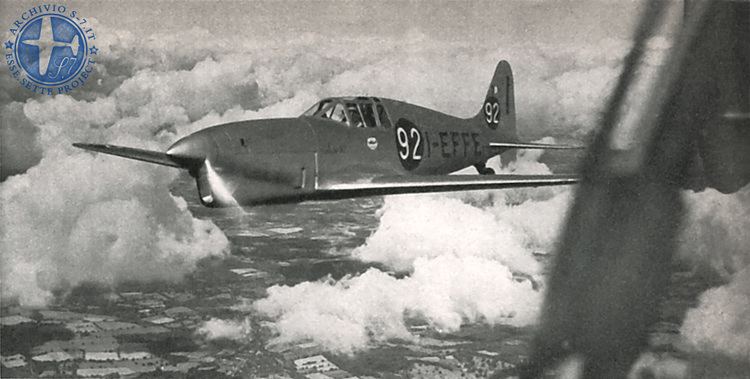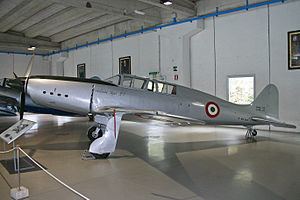Top speed 358 km/h Length 8.17 m Manufacturer SAI Ambrosini | Wingspan 8.79 m First flight July 1939 Designer Sergio Stefanutti | |
 | ||
The Ambrosini SAI.7 was an Italian racing aircraft flown before World War II that entered production as a military trainer (designated simply S.7) after the war. It was of conventional configuration, constructed of wood, with a tail wheel undercarriage. Power was provided by an air-cooled inverted inline engine, the Alfa-Romeo model 115 with 225 horsepower.
Contents

Development

The SAI.7 was built to compete in the IV Avioraduno del Littorio rally, which departed Rimini on 15 July 1939. As equipped for the race, the two SAI.7s were fitted with special glazed fairings extending from the canopy to the nose of the aircraft, to provide extra streamlining. The aircraft began their proving flights too late, and were disqualified from the competition, but on August 27, one of them set a new world airspeed record for a 100 km closed loop, which it completed at 403.9 km/h (252 mph) powered by a Hirth HM 508D.

During the war, the Regia Aeronautica expressed interest in the aircraft as a trainer for fighter pilots, and a slightly revised version entered limited production in 1943 as the SAI.7T. Only 10 were built, but in 1949 a modernised version powered by an Alfa Romeo engine was produced, 145 of them for the re-formed Italian Air Force, including some single-seaters. On 21 December 1951 Leonardo Bonzi set new airspeed records in one over 100 km and 1000 km, at 367.36 km/h and 358.63 km/h respectively.

The final stage in the S.7's development was the Supersette (Super 7), two standard S.7s, one re-engined with a 380 hp de Havilland Gipsy Queen with a unique four-piece cowling that opened like a "flower petal", the other with an Alfa Romeo 121. Both were modified and refined several times, and in the latter aircraft, Guidantonio Ferrari increased the international airspeed record for this category of aircraft to 419.482 km/h at Rome on December 3, 1952. Despite this, the air force was no longer interested in buying piston-engined trainers, and no further Supersettes were built. Both are preserved in museums.
An S.7 fuselage was also used as the basis for the Ambrosini Sagittario, which tested swept wing configurations.
Variants
Operators

Specifications (S.7)
Data from The Encyclopedia of World Aircraft
General characteristics
Performance
